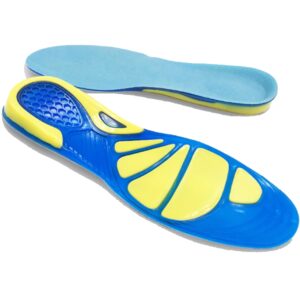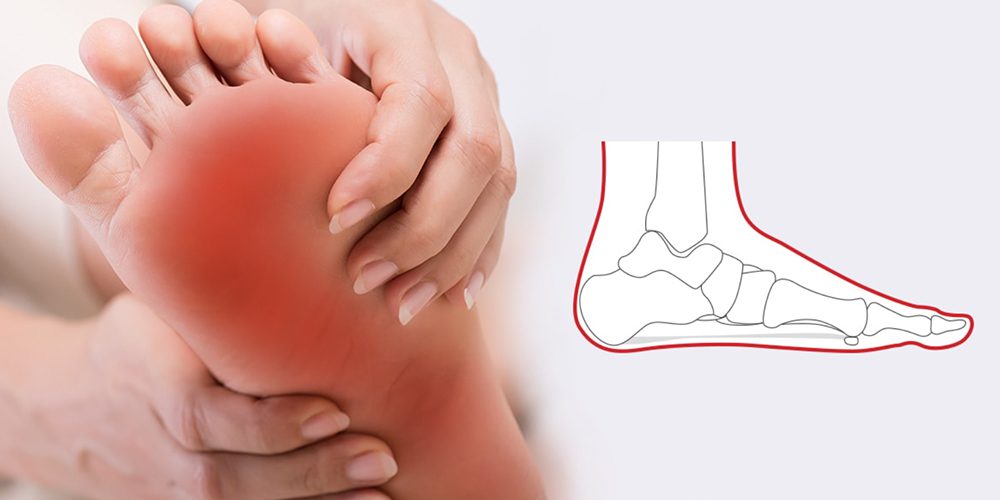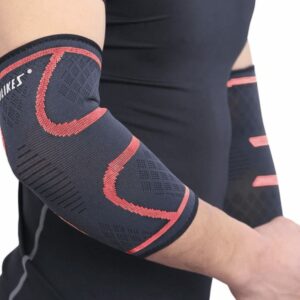Achilles tendon rupture is one of the most common foot injuries. It can happen due to either sudden movements or long-term strain on your Achilles tendon, and pain typically gets worse over time. However, there are treatments you can use to make it feel better and help prevent recurrence like stretching, strengthening exercises, ice packs, and even surgery in some cases. Here’s what to do if you sustain an Achilles tendon rupture!
How can an Achilles tendon rupture occur?
Achilles tendon rupture is where the main tendon at the back of your ankle, the Achilles tendon, snaps. This can occur during a sudden movement such as jumping or landing from a height and sometimes even at rest. The cause of this injury varies among individuals: for example, it can be because their muscles and tendons are too tight (this is especially common in middle-aged women) or because of an underlying medical condition such as arthritis, diabetes or gout.
In most cases, intense athletic activity or force is needed to injure your Achilles tendon. However, in some cases, a ruptured Achilles is the result of the tendon being overused with no rest from physical activity. This can lead to a weakening of the tissue with degeneration and microscopic tears that it has been shown to actually be more common than a traumatic rupture.
Symptoms
Typical symptoms of a ruptured Achilles tendon include:
– Sharp pain at the back of your ankle or in your calf, which may spread to your heel and the rest of the foot.
– Swelling and bruising over the back of your lower leg and/or around your heel.
– The inability to bend your foot, which can indicate a complete tear of the tendon.
– A “popping” sound when the tendon is ruptured or a grinding sensation at the time of injury.
– A gap or indentation in the tendon.
– Pain when you press on the ruptured tendon and the inability to stand on the toes of the injured leg
If you suspect that your Achilles tendon has ruptured, either get to an emergency room or call 911 for help right away. An X-ray can confirm whether or not it has occurred and treatment will be accordingly.
Diagnosis
Your doctor can diagnose an Achilles tendon rupture by asking about your symptoms, taking a medical history and examining your ankle. He or she may then order imaging studies such as X-rays, an MRI scan or ultrasound test to confirm the diagnosis.
Beyond asking questions and relying on images of the area of pain, your doctor will use his/her hands to feel for a defect in the tendon. Likely you won’t be asked to perform certain tasks like standing on your toes or anything like that. Simply because the diagnosis of a ruptured Achilles tendon is typically straightforward.
Can you still walk with a torn Achilles tendon?
The Achilles tendon is one of the strongest in your body. It helps you to run, jump and stand up on your toes. So it can be devastating to learn that this crucial tendon has ruptured.
If it’s a “complete tear” this means that the tendon is damaged beyond repair. If it’s a “partial tear” then you will still be able to walk because the tendon is intact. However, this will be very difficult and painful (often more painful than a complete tear). The good news is that surgical treatment can usually ensure that you end up with a strong tendon again.
Patients with rupture of the Achilles tendon are still able to walk and move their ankles up and down. Bu this may be painful and in some cases very very painful.
How long does it take to recover from Achilles rupture?
If you rupture your Achilles tendon, you will need to take it easy (and maybe even use crutches) for at least six weeks. This allows the tissue to heal and also ensures that none of the calf muscles or tendons tighten up too much around the area.
After this initial healing phase, you’ll be able to slowly start to rebuild and strengthen the tendon with a regular stretching and strengthening program. This will typically take another four months or so – but it’s crucial to give your Achilles plenty of time to heal before attempting any heavy strength training.
Non-surgical treatment options
Treatment options for a ruptured Achilles tendon can be divided in two separate approaches. The non-surgical and the surgical way. The route to take depends on the severity of the rupture and the individual aspects of each patient. Your doctor will either recommend one way or the other because of his experience and the chances of healing. Non-surgical treatment options are selected for minor injuries and ruptures and include:
– Immobilization of the ankle with a cast or splint for four weeks, followed by physical therapy
– Orthotics to correct any biomechanical problems in your foot
– Extracorporeal shockwave therapy that applies high energy shockwaves to the Achilles tendon, which stimulates healing and promotes tissue strength.
– Physical therapy that strengthens the muscles and improves the range of motion in the foot and ankle
– Anti-inflammatory medications and painkillers
– Using compression socks to relieve the pain and support the Achilles tendon
The reason for non-surgical treatment is the ability of your Achilles tendon to heal on its own. And while this may save you from the need of surgery, the risk for re-rupture is a bit higher.
Surgery
Surgery is recommended if the tendon ruptures partially or completely. The surgical procedure will be done under either general anesthesia or spinal surgery. And while surgery is often considered an invasive technique, recovery is often considered to be easier because of the ability to get on your feet again without limitations in movement.
The surgery for Achilles tendon rupture can go one of two ways depending on the situation. There are open surgery techniques, where an incision is made on the back of your ankle. During the operation, the damaged part of your Achilles tendon will be removed and then reattached to its original location with stitches or metal anchors.
And the other way is the endoscopic surgery technique, where a mini camera and instruments are inserted into your ankle through small holes. This technique only requires small incisions and results in less scarring and a faster recovery.
Achilles surgery only takes between 30 minutes to an hour and you can leave the hospital on the same day in most cases.
Prevention
The best way to prevent Achilles tendon rupture is by wearing the right footwear. Shoes that offer good cushioning and shock absorption can reduce strain on your Achilles tendon, so it has time to heal between workouts.
Therefore, try wearing shoes with good arch support and good shock-absorption. Don’t go for shoes that have too low or high of an arch as this can also cause you pain and injury. Enabling yourself to work out with proper footwear is one of the most effective ways to prevent Achilles tendon rupture.
Another important thing to do is strengthen and stretch your calf muscles before and after each run or exercise. If you try to progress too quickly with your training, this may cause muscle fatigue and tears in the area. Your foot will need time to become strong enough for the demands of strenuous workouts, so take it easy at first.
A big mistake runners do is increase running mileage too quickly. However, most people are fully capable of increasing their mileage by 10% per week.
Avoid running or exercising on uneven surfaces like hills and rocks, as this can make your workouts more tough and stressful for your feet and ankles. When you run on any uneven surface, the shockwaves would be absorbed by your Achilles tendon instead of being deflected to other parts of your feet.
You should also try ice therapy and stretch your Achilles tendon if you feel any pain in it. You can also add strengthening exercises to your training routine like side-to-side leg lifts, the stiff-leg deadlift, straight-leg calf raises, and toe walks.
To repeat: when you’re at risk for an Achilles rupture , strengthening and stretching exercises are the best way to prevent it.
Prevention is key when it comes to preventing Achilles tendon rupture. And since you have to strengthen your legs before working out, take it easy at first so you don’t strain yourself too much! When you feel pain in your Achilles tendon, give your feet a rest.
There are many ways to prevent Achilles tendon rupture, but the best way is by strengthening and stretching your leg muscles before working out. When you feel any pain in your Achilles tendon, give it a break for at least 24 hours. And when you’re wearing shoes that don’t offer adequate support or shock-absorption, consider investing in better quality footwear. The other big mistake runners make is increasing their mileage too quickly without building up strength first. If you want more information on preventing an ankle injury like this one, contact our team of professionals today and make sure to read our other articles about foot pain as well.
Leave us a comment below and tell us about your experiences, challenges and healing process. We’d love to hear your thoughts!























One Response
Thanks for explaining how a tendon rupture could affect your daily physical movements such as standing and running. My friend talked about his plans to undergo rigorous training for an upcoming marathon this year. I should suggest that he find a local doctor that can offer treatments if this happens to him someday.